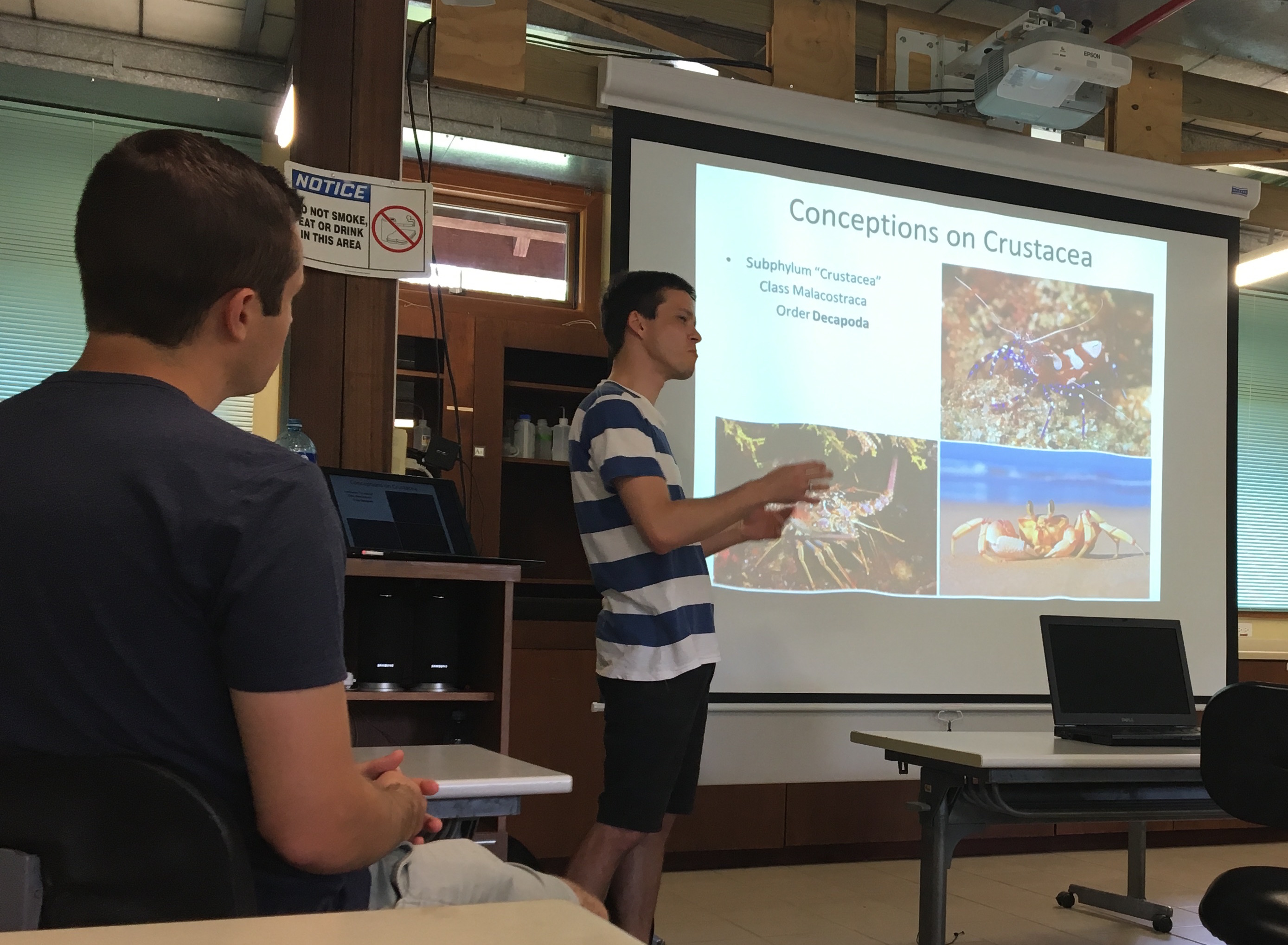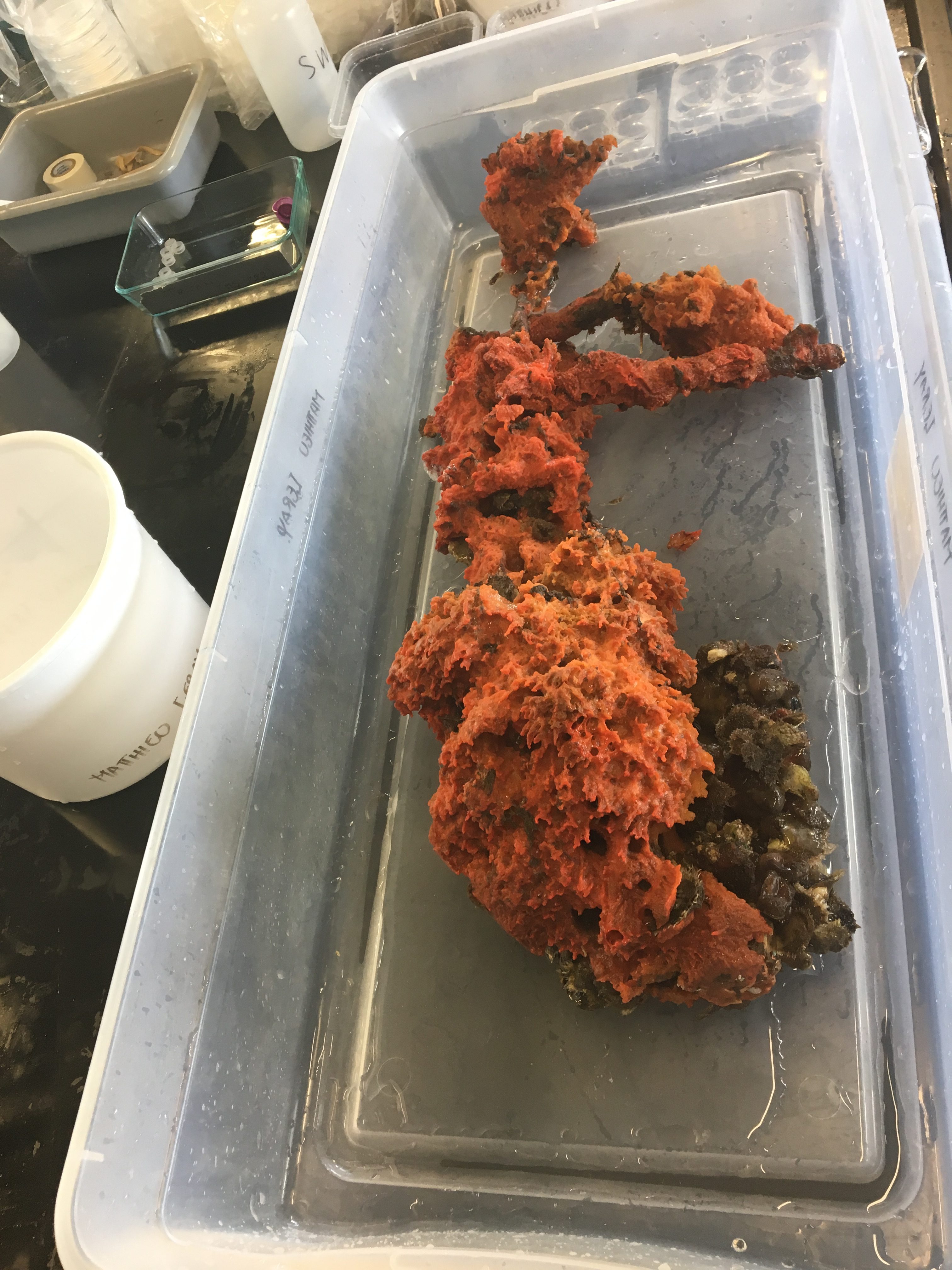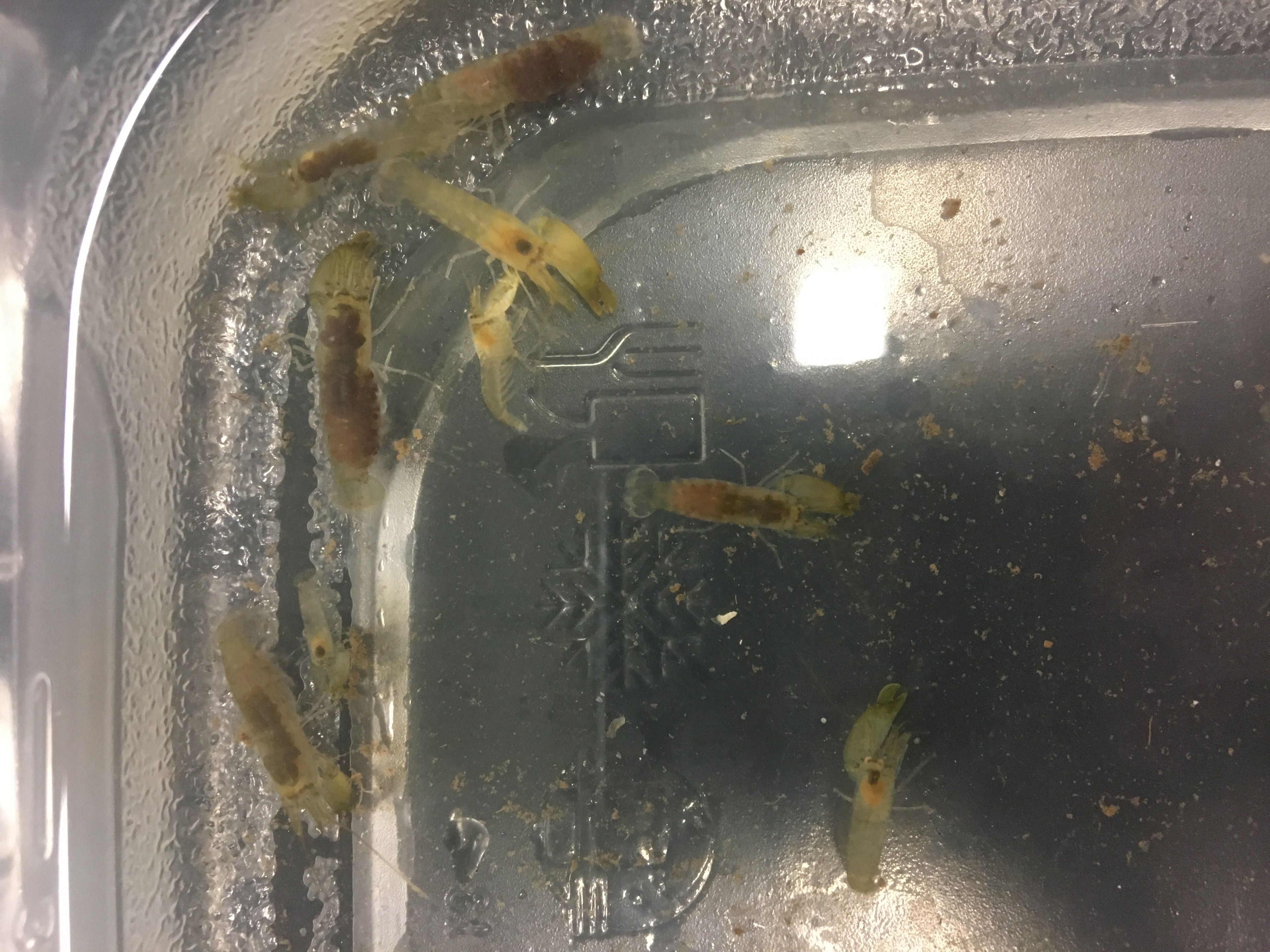Today, I spent three hours identifying shrimps for fun with our expert decapod taxonomist, Paulo!

Paulo gave us a “very basic minicourse on shrimp identification in Bocas Del Toro” before we looked under the scope.
In particular, my friend Coll and I were able to get to the species level of a snapping shrimp, which make up the most distinctive sound on coral reefs and most of the ocean. The crackling and popping noises you hear underwater are due to the loud sound that they are able to make with a dominant claw, which emit a powerful wave of bubbles that can stun fish much larger than them in size.
Snapping shrimp are in the family Alpheidae and can be found worldwide. The species we identified was from one of two prominent genera, Synalpheus. In our mangrove root samples, we end up finding more Synalpheus shrimp than any other genera of shrimp! You know you have one in your mangrove root sample because you can hear each one snap in your tub. If you have large sponges that kind of have Swiss-cheese like holes, it’s very likely that you’ll find many Synalpheus shrimps finding shelter deep within them. A large orange clionid sponge encrusting on one of our roots had over 40 of them!

So much of the mangrove root has been taken over by a clionid sponge that you can barely tell that this came from a tree!
Apparently, there have been studies showing that Synalpheus shrimp can live in large colonies (up to 300 members!) and exhibit eusocial organization. All of the members are the offspring of a single large queen female and tend to /defend her as male soldiers. Only a single male (or a lucky few) are able to directly pass on their genes by mating with the queen. This unique social structure has been hypothesized to exist because members in the group are able to get more benefits (like division of labor) this way instead of each trying to reproduce themselves. These benefits are known as inclusive fitness benefits.
Anyways, identifying any type of shrimp is no easy task. Even while using taxonomic key with a diagram of all the potential visible parts of a shrimp, getting down to the (correct) genus took close to an hour for each shrimp. The shrimps we were looking at were semi-transparent, which meant some of the small hairs and “teeth-like” structures on their heads were close to invisible. It definitely takes a trained eye to be able to quickly work through the step-by-step nature of taxonomic keys. Once Paulo gave us a satisfied thumbs-up at our educated guesses, the puzzling looks on our faces turned into relieved high-fives. Coll and I identified a Synalpheus dardeaui after looking at very specific parts of the legs, mouth parts, tail, and more of a shrimp no more than three centimeters.
I definitely came to appreciate the hard work that it takes to describe species and relate them together enough to create step-by-step taxonomic guides. Taxonomy is no longer a “hot” field to pursue, so there a fewer specialists in sometimes cryptic and under-described groups who are taking on species identification challenges from all over the world. But the ability to describe and classify an organism in relation to others is still extremely important – phylogenies can’t die with the few specialists who currently study them!


